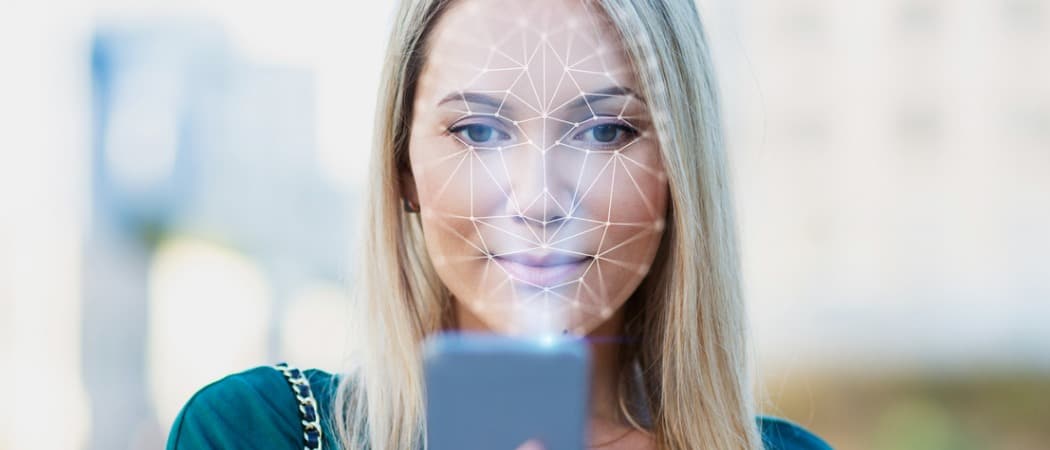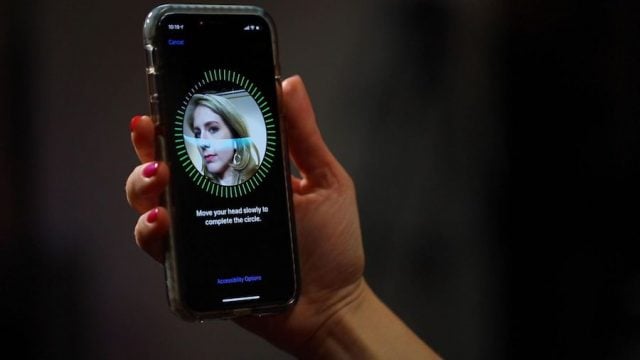What is Face ID?
As its name suggests, Face ID uses your face to unlock your device using biometric authentication. The tool can also be used to make digital payments, access sensitive data, and provide detailed facial expression tracking for Apple Animoji. In terms of hardware, Face ID uses a built-in sensor that includes three modules. The first of these, the dot projector, uses 30,000 invisible infrared dots that are digitally placed onto a users’ face. The flood illuminator, meanwhile, uses the information collected by the dot projector to generate a 3D facial depth map. The third module, an infrared camera, snaps a picture of the user. All of this is done within seconds whenever someone lifts the mobile device to their face. From there, the system determines whether the map that has just been created matches that of the registered user. According to Apple, the system can recognize and adapt to changes in someone’s appearance, noting:
What About Security?
Apple says numerous safeguards are put into place when it comes to Face ID. Central to these is a so-called Secure Enclave where the depth map and infrared image are stored directly on the device and encrypted. The key to unlocking the device is stored within that Secure Enclave and not sent to Apple or another third party. It’s also not backed up to iCloud or anywhere else separate from your device. For an additional safeguard, Apple allows only five unsuccessful facial match attempts before a passcode is required on the device. Further, Apple doesn’t allow Face ID in cases when:
The device has just been turned on or restarted.The device hasn’t been unlocked for more than 48 hours.The passcode hasn’t been used to unlock the device in the last six and a half days and Face ID hasn’t unlocked the device in the previous 4 hours.The device has received a remote lock command.After initiating power off/Emergency SOS by pressing and holding either the volume button and the side button simultaneously for 2 seconds.
According to Apple’s most current data, the probability that a random person can open a mobile device using Face ID is approximately one in 1 million. The statistical probability for identical twins and siblings is different, and for users under the age of 13 when distinct facial features haven’t yet been developed.
Early Scrutiny
When a new authentication tool is released, security (or lack thereof) is scrutinized, and rightly so. Early on, Face ID was modestly criticized over the twin issue. There were also stories about users who claimed special masks could unlock a mobile device that uses Face ID. Beyond this, it appears Face ID includes near rock-solid technology that won’t allow a device to get unlocked without the owner of the phone present. This brings us to the one area where conflict remains, law enforcement. To date, specifically in the United States, there isn’t one far-reaching law or statute that says the police are legally allowed to force someone to open their device using Face ID. In January 2019, a U.S. federal judge ruled that the police cannot force someone to unlock their device with Face ID or Touch ID. However, this isn’t necessarily settled law, and no one can know what the future may hold.
Setting up Face ID
You’re asked to set up Face ID during the install process on a new Apple device. You can always change your Face ID later on. To set up Face ID:
To set up an alternative appearance: Officially, you can’t use Face ID for more than one person on a device. However, using Apple’s alternative appearance tool, you can essentially do just that. And just like that, your partner, child, or someone else you want can open your mobile device too!
Using Face ID
Once Face ID is set up on your device, you’re ready to go! There are there three ways to use the tool: to unlock your device, make a purchase, and sign in to certain apps or websites.
Unlocking Your Device With Face ID
Upon authentication, your device becomes unlocked.
Making a Purchase With Face ID
You can use Face ID to make a purchase anywhere that accepts Apple Pay. It also works digitally in the iTunes Store, App Store, and Book Store in Apple Books. To purchase in a store:
To make a purchase within an app or on a website in Safari: In one of Apple’s online stores:
Use Face to Sign Into Certain Apps or Websites
Finally, you can use Face ID to access certain apps or websites: In apps: Look for Face ID to show up on future Apple devices, including the 2019 iPhones and iPads. It’s not yet known whether the technology will expand to other Apple products. That’s it! You’ve now signed into your favorite app or website.
Restricting Face ID Use
If you rather not use Face ID to make purchases or to open apps/websites, you can turn these and other options off. From this screen, you can toggle:
iPhone UnlockiTunes & App StoreApple PayPassword AutoFill
Further, you can also restrict the apps that can use Face ID for authentication.
![]()




